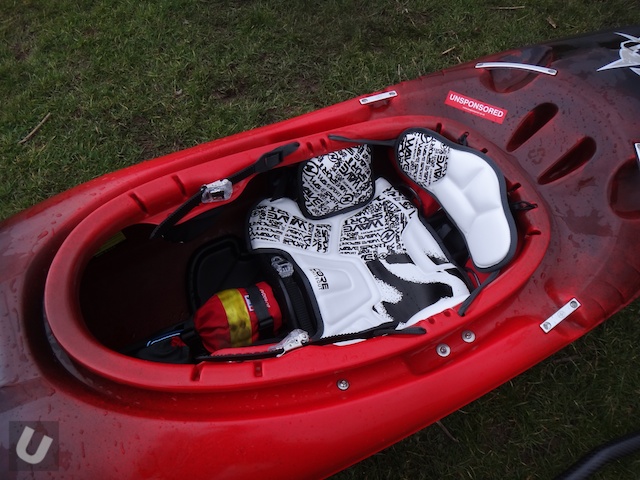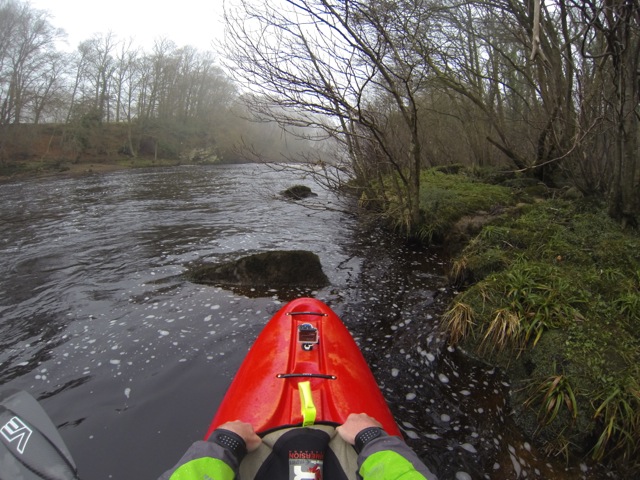Chris Brain runs through the three simple steps to properly fit your PFD.

Paddling tips, tricks, news and gear reviews from an Unsponsored point of view
Chris Brain runs through the three simple steps to properly fit your PFD.

Team Dagger Athlete Adriene Levknecht walks you through how she, as a 5’2″ paddler, adjusts her Dagger Contour Seat Outfitting for a comfortable safe fit even in a big high volume whitewater kayak like the Phantom or Greenboat.
Why they are called thighhooks not kneehooks
The concept is that when rolling, riverrunning, or playboating (cartwheels, stern squirts, etc.) The upper body leads and rotates the lower at the hips.

“Ooh I love the colour”, “Such a pretty drysuit!”, “It matches your boat!”

These are comments that I’ve had about my Immersion Research Shawty drysuit which I’ve been using for the past couple of months. Don’t get me wrong, I love the colour but I also think it’s a great bit of kit and am disappointed that no one’s asked me why I actually bought it rather than assuming I got it because it’s purple!
Here’s my tuppence worth:
I’m 5ft 3, size 10/12 with short (T-Rex!) arms and I have a medium Shawty. I use my drysuit for coaching (when it’s cold), WW Kayaking, “freestyle” (being upside down a lot!), SUPing and bizarrely, rescuing sheep!
Many people are oblivious as to when their Personal Flotation Device (PFD) has reached the end of its functional life. An easy indication of when you ought to get a new Personal Flotation Device (PFD) is when you can’t read the label on the inside. When the label starts to deteriorate to the point you can’t read it, the flotation has probably started to deteriorate as well.
To say I’m picky about my PFD, how it fits, and what I carry in it, would be a massive understatement. If you spend the number of years having fun on the water that I have, you will encounter your share of rescue situations. What you have on your chest will be the tools at your disposal to fix those situations.
Choosing the right helmet is extremely important part of getting your safety gear correct. A poorly fitting helmet may be as effective as not wearing one at all.
For any helmet it always comes down to the fit, coverage, protection offered, intended use and paddler ability.
These factors change for each person and the best way to judge these factors is with comparisons to known entities:
From the very first moment you sit in a boat you start to get “a feel for it”, how it fits and possibly even how it may perform. As beginners we start off in boats that may be used by many different size paddlers, which results in cockpits being kept clutter free. Loose, comfortable boats feel good on flat water, but they can make leaning and bracing difficult. Once the boat is padded to provide a close, body-hugging fit that still allows for quick and easy water exits, performance can dramatically improve. This same rule applies to all levels of kayakers, whether they’re paddling easy whitewater, big water runs or creeks. Customised outfitting helps transfer every trace in the river’s current through the kayak’s hull to your body, helping you sense your surroundings, make critical maneuvers and maintain your balance, thus staying upright!

Since paddlers press against their boat’s inner hull with the small of their backs, butts, hips, thighs, knees and feet, it is these key areas that should be customised to match the shape and size of the paddler. To make this as easy as possible I am going to break the cockpit into a handful of sections and tailor each one to help you get the best control possible from your boat. Many boat manufacturers have really stepped up their game and are providing some excellent outfitting as standard in their kayaks. However these systems still need adapting in some way to ensure that they fit YOU correctly.
I have now been using a Peak UK Custom drysuit for about 6 months on rivers and for playboating and I have been very pleased with it. Not only is the drysuit really good quality but the ability to have your own customised design incorporated really well into it makes for a winning combination.
One of the key features about this drysuit is that it is made out of their X3 material not the X4 that some of Peak’s other kit is made out of. Now this comes with a selection of pros and cons that will depend really on what the individual paddler would want from their suit. Trying on the Peak whitewater one piece in the shop, the X4 material felt quite heavy to wear although I don’t imagine this would greatly affect movement on the water too much. The custom suit with the X3 however feels much lighter.
Getting a spraydeck that fits you and your boat is crucial if you want to keep the water out. All boats are different and all decks are different, so it’s important to do a little research on what deck fits your boat the best.
One of my favourite resources is Skirt Fit. It is an online database that contains most of the popular boats and decks that are currently on the market. It is well worth checking out.

From the very first moment you sit in a boat you start to get “a feel for it”, how it fits and possibly even how it may perform. As beginners we start off in boats that may be used by many different size paddlers, which results in cockpits being kept clutter free. Loose, comfortable boats feel good on flat water, but they can make leaning and bracing difficult. Once the boat is padded to provide a close, body-hugging fit that still allows for quick and easy water exits, performance can dramatically improve. This same rule applies to all levels of kayakers, whether they’re paddling easy whitewater, big water runs or creeks. Customised outfitting helps transfer every trace in the river’s current through the kayak’s hull to your body, helping you sense your surroundings, make critical maneuvers and maintain your balance, thus staying upright!
Since paddlers press against their boat’s inner hull with the small of their backs, butts, hips, thighs, knees and feet, it is these key areas that should be customised to match the shape and size of the paddler. To make this as easy as possible I am going to break the cockpit into a handful of sections and tailor each one to help you get the best control possible from your boat.
Continue reading© 2024 Unsponsored
Theme by Anders Norén — Up ↑
Recent Comments